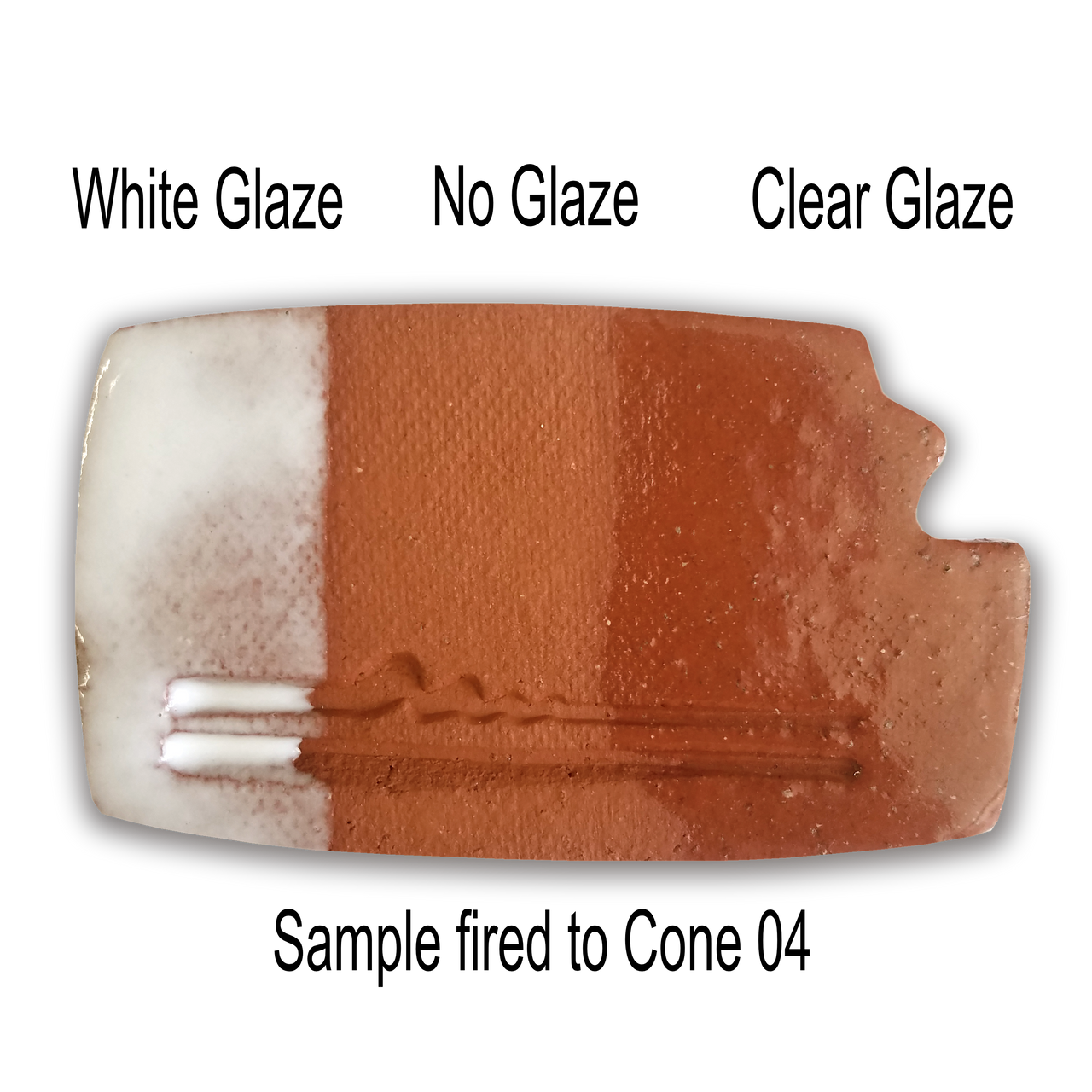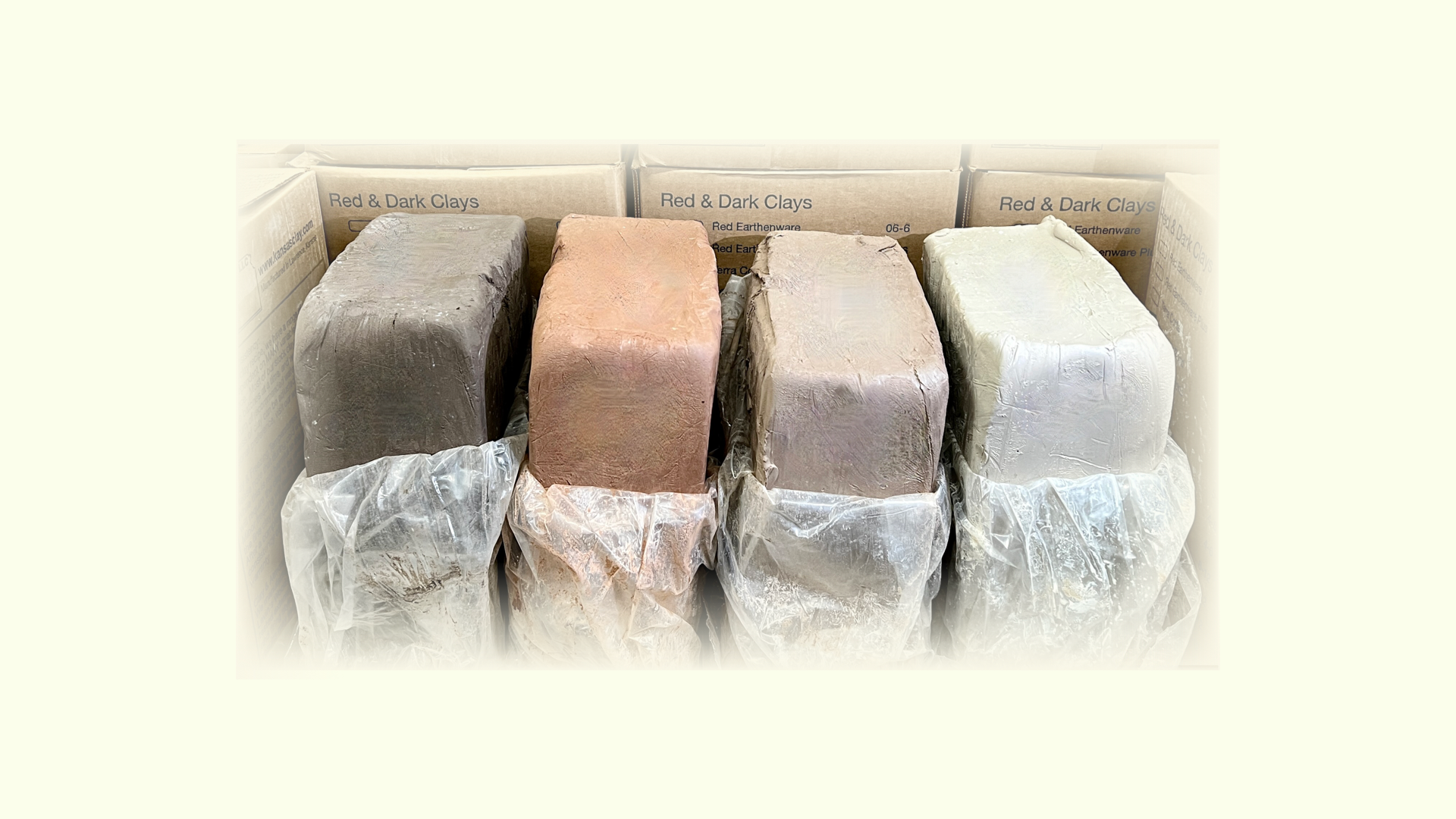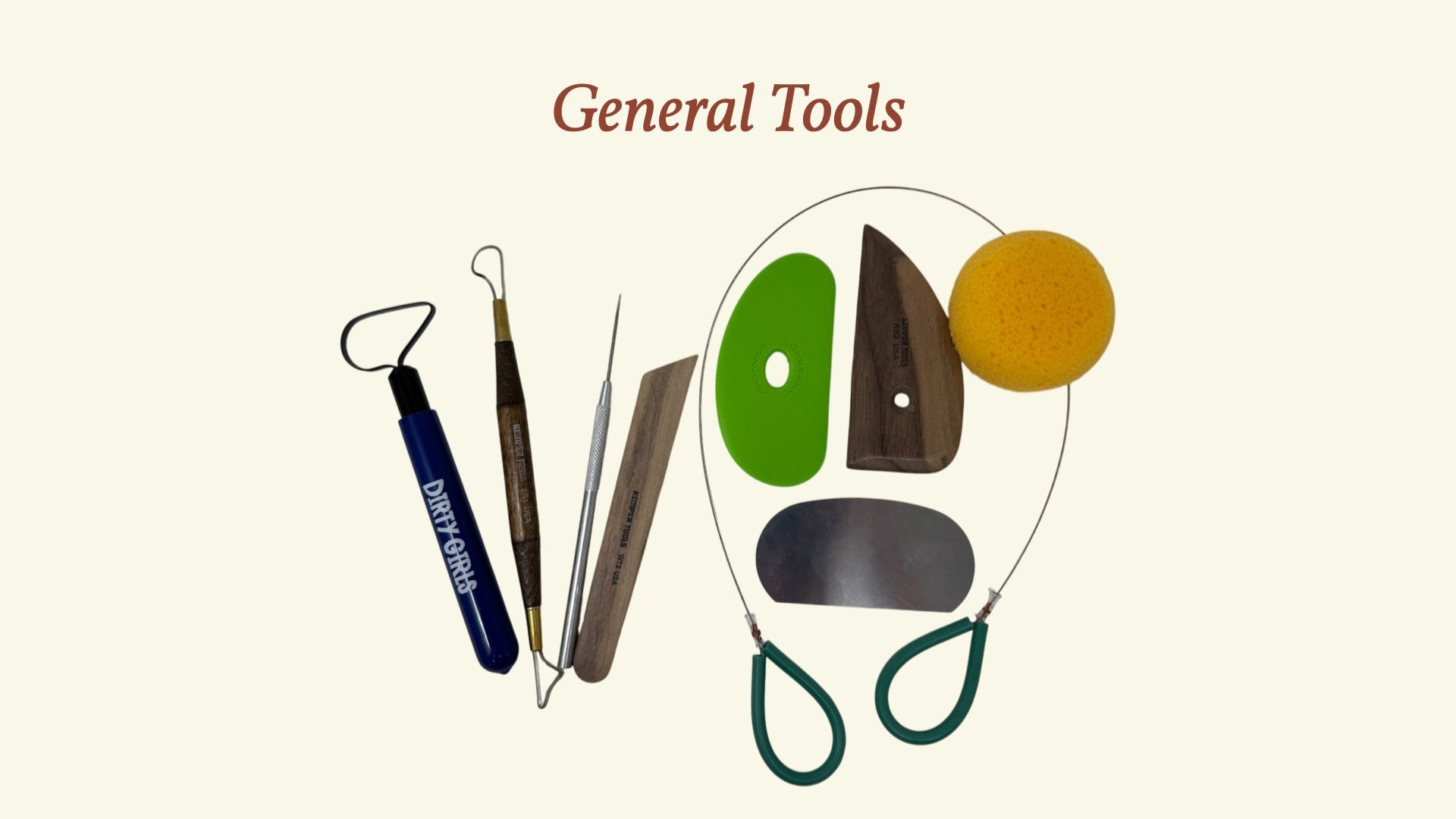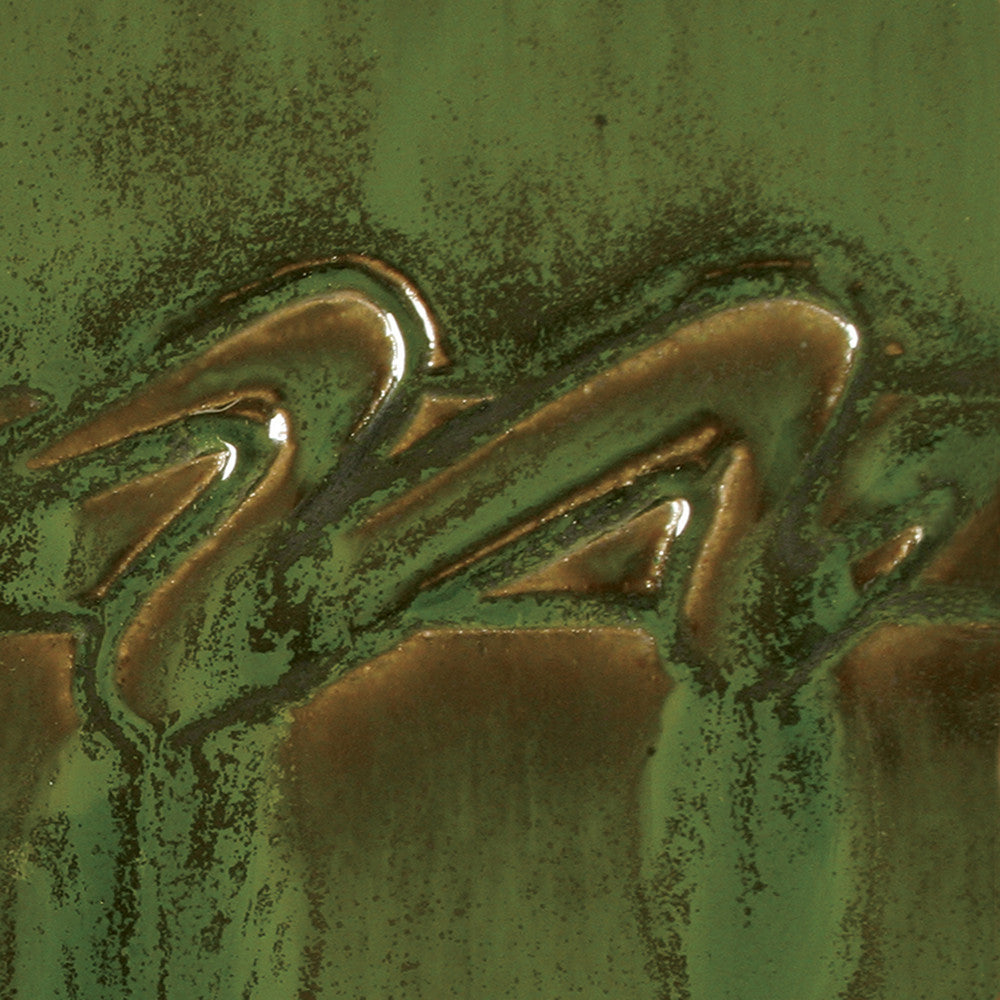Earthenware Red Plus
Earthenware Red Plus
Share this product


- beginning weights in grams were recorded
- the lines and weights were measured & recorded when bone dry
- The samples were fired to Cone 04
- lines and weights were measured & recorded again
- The flat tiles were then soaked in hot water for 1 1/2 hours, then weighed again
- Math magic was then done to calculate the average shrinkage wet-dry and average shrinkage overall for both flat and thrown tests, and the average water absorption was calculated based on the flat bars.
- We also figured the "LOI" (Loss on Ignition) by computing the fired weight against the bone dry weight. This tells us what percent of organics burn off in the firing.
Flint Hills clays have been evaluated by a nationally certified toxicologist, and have been found to be in compliance with ASTM C-1023 and D-4236, and to not contain any material in sufficient quantity to be toxic or to constitute a chronic health hazard when used responsibly.
RECOMMENDED VIDEO: Red Clay Comparison by Bracker's
Hurry up, only 8 items left in stock.
Clay Characteristics
Clay Characteristics
Color: Red, in Reduction
Texture: Lightly Grogged
Maximum Tested Temperature:
Other commonly used firing ranges:
Shrinkage:
- 7.93% at Bisque
- at Cone 5
- at Cone 10
Absorption:
Brand: Kansas Clays, LLC
Most often used as a
Other Details
Other Details
This clay body works well for the following:
Pricing Details: Bulk pricing on full boxes
Inventory/Shipping Notes:
Safety
Safety
:
Your payment information is authorized at checkout, your order is then reviewed by staff, and your payment is processed securely after your order is confirmed. We do not store credit card details nor have access to your credit card information.










